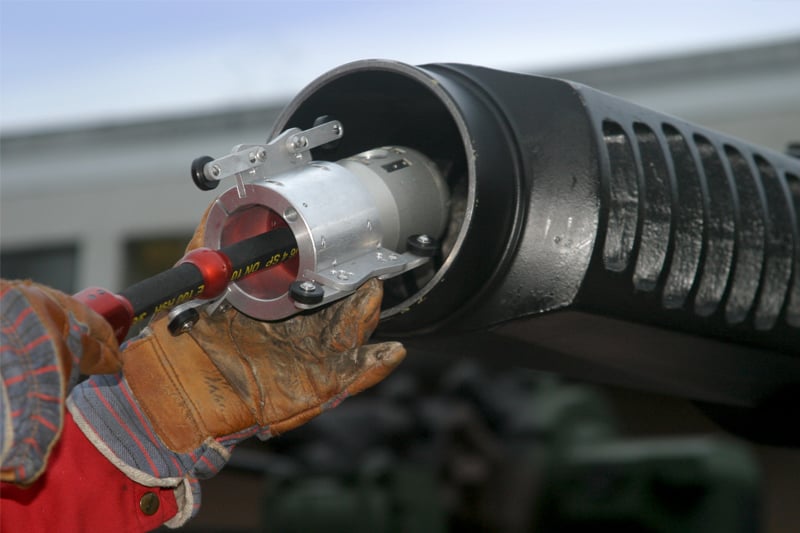The Increasing Demand For Remote Visual Inspection – How Can It Benefit Your Business?

The increasing demand for remote visual inspection cameras isn’t just good news for the equipment manufacturers, it’s good news for your business too.
In order to understand why the growth of this industry offers advantages to businesses, let’s put RVI into context.
Essentially, this non-destructive testing (NDT) technique is the application of visual inspection of an object or area under test without the technician being in the test area, ie inspection from a remote position. Huge technological strides have been made over the years, from the introduction of early optical instruments (rigid borescopes) through to fibrescopes which introduced a flexible fibre optic bundle linking the eyepiece with the lens and ultimately to the more complex videoscopes – with each of these developments bringing new levels of capability to the visual inspection arena.
Advances in the consumer electronics industry have also had a knock-on effect in the field of RVI as equipment manufacturers apply and refine new technologies to improve their products. For example, developments in CMOS and CCD camera chips have been used to improve the quality and accuracy of the imaging delivered by videoscopes, plus cameras are now much more compact so they can reach further into confined spaces.
Software development and digital communications have been further drivers of growth, enabling inspections to be viewed on screens, recorded, shared and analysed all over the world in real-time whilst similar advancements in the field of robotics have enabled RVI instruments to venture further and deeper into hard-to-access areas than ever before. Improved illumination has further expanded the capabilities of many RVI instruments with many featuring powerful LED lights and stereoscopic systems to enable depth and distance measurements.
In tandem with the ongoing technological developments in RVI equipment, there is also a growing need for operations to maximise the uptime of their equipment, improve health and safety, manage quality control in line with increasingly stringent regulations and extend the useful life of their existing infrastructure.
The combination of all of these factors put pressure on equipment manufacturers to constantly innovate and upgrade their offerings which in turn, enable operations to meet their ever-changing and more rigorous RVI needs more quickly and more cost-effectively.
Market research estimated the total visual inspection market to be US$297.6 million in 2011 with an anticipated compound annual growth of 8.1%. In their study, ‘Analysis of Nondestructive Test Equipment Market’, Frost & Sullivan put the total visual inspection market at 21.3% of the total NDT equipment market in 2011 and forecast it to increase to 21.6% by 2016 with higher adoption of RVI being an important factor for the revenue growth rate.
As discussed earlier, this increasing demand is good for business on many fronts. It means the manufacturers are constantly pushing – and being pushed – to invest in R&D to improve their products and meet changing customer demands, and it puts price-pressure on these products. The increasing demand also brings a further key benefit in the form of greater numbers of skilled RVI technicians.
It’s important for businesses to choose an equipment supplier who is committed to passing on the benefits of a growing RVI industry back to the operation. It’s all very well having a state-of-the-art videoscope with all the bells and whistles on site, but if the device sits idle for months of the year, it’s not such a wise investment. As suppliers of specialist pipe inspection cameras (RVI) offering flexible payment models to deliver solutions, Nexxis show our customers how to deliver the best solutions to their projects. Contact us to find out more.
